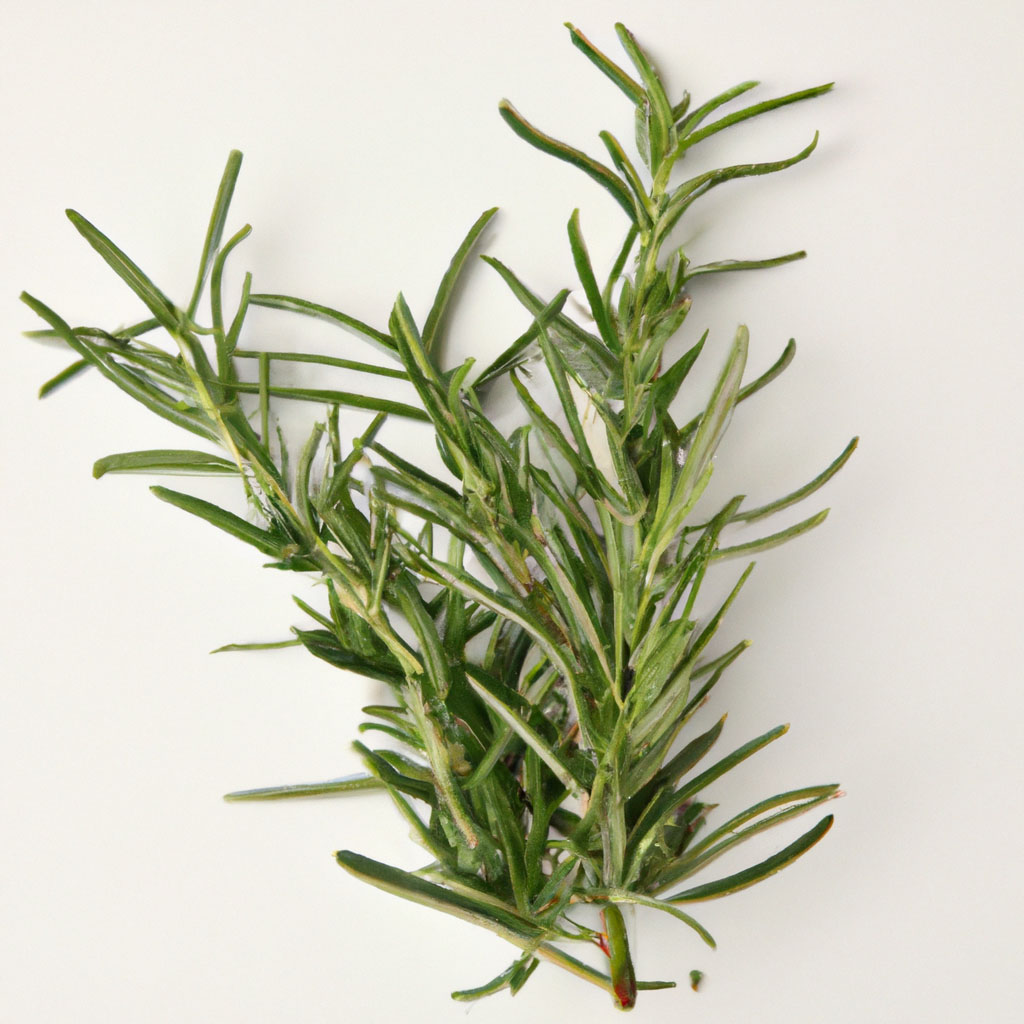Botanical Name: Salvia rosmarinus
Rosemary is a fragrant, evergreen herb native to the Mediterranean region, known for its distinctive needle-like leaves and aromatic properties. As one of the most versatile herbs, rosemary has been cherished for centuries for its robust flavor. In the kitchen, rosemary’s piney, woodsy aroma and sharp, slightly peppery flavor make it a favorite addition to a wide variety of savory dishes, especially those that feature roasted meats, vegetables, and breads.
Rosemary’s flavor is bold and slightly resinous, with a characteristic aroma that evokes pine forests. Its robust nature allows it to stand up to long cooking times, making it an ideal herb for slow-cooked dishes like roasts and stews. The herb is particularly well-suited to roasted meats, especially lamb, pork, and chicken, where it imparts a rich, earthy flavor that complements the natural richness of the meat. It is commonly used to flavor leg of lamb, where sprigs of rosemary are often inserted into the meat before roasting, as well as pork tenderloin or roast chicken, where it is either rubbed into the skin or scattered over the dish.
Rosemary also pairs beautifully with potatoes and other root vegetables. Roasted rosemary potatoes are a classic side dish, where the herb’s sharp, slightly astringent notes cut through the starchy richness of the potatoes. The herb is often chopped and tossed with olive oil and garlic before being roasted with potatoes, carrots, or parsnips, bringing out the natural sweetness of the vegetables while adding a savory, herbal kick.
In baking, rosemary’s earthy flavor shines in savory breads and pastries. It’s often incorporated into focaccia—a traditional Italian flatbread that’s typically topped with olive oil, sea salt, and fresh rosemary sprigs before baking. Rosemary can also be used to flavor crackers, scones, or even savory shortbread, creating a unique fusion of flavors that are both rich and herbaceous.
While it’s most commonly used in savory dishes, rosemary can also be used in sweet applications. It pairs surprisingly well with citrus flavors like lemon or orange, and can be infused into syrups for cocktails, or even added to desserts like cookies or cakes for an unexpected depth of flavor.
Rosemary’s aromatic qualities make it a popular choice in the world of beverages, too. The herb can be steeped in hot water to make a fragrant rosemary tea, which is both soothing and refreshing. It’s also used to flavor syrups for cocktails, lending a piney, herbal note to drinks like gin cocktails, lemonades, or even in a rosemary-infused simple syrup for use in iced teas or sodas. Sprigs of rosemary are sometimes used as garnishes in cocktails, providing both a visual and aromatic enhancement.
When cooking with rosemary, both fresh and dried forms of the herb can be used, though they have slightly different properties. Fresh rosemary has a brighter, more intense flavor and is ideal for dishes that require shorter cooking times or where the herb is added at the end for a fresh, aromatic punch. The leaves of fresh rosemary are typically stripped from the woody stem before use, and the whole sprigs can also be used to flavor oils, marinades, or grilled foods.
Dried rosemary, on the other hand, has a more concentrated flavor and can be added earlier in the cooking process, as its tough leaves take longer to soften. Dried rosemary is ideal for slow-cooked dishes, such as soups, stews, or braised meats, where it has time to release its full flavor over a longer period.

